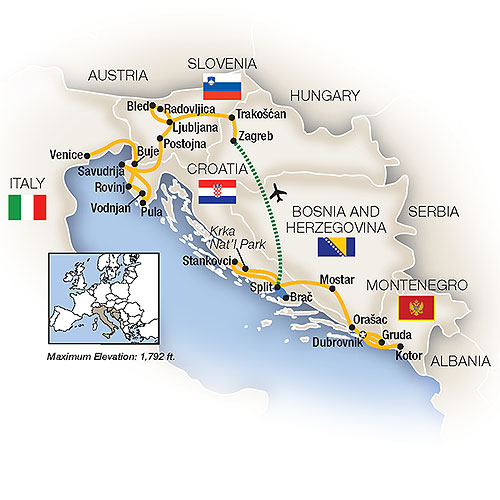
Adriatic Treasures: Croatia to Venice
Mike and Judy Henderson
September 13-29, 2019
I'm going to leave the map at the start of each page so you can see where we are.

9/25/2019 (Wednesday) We bused to Pula this morning.
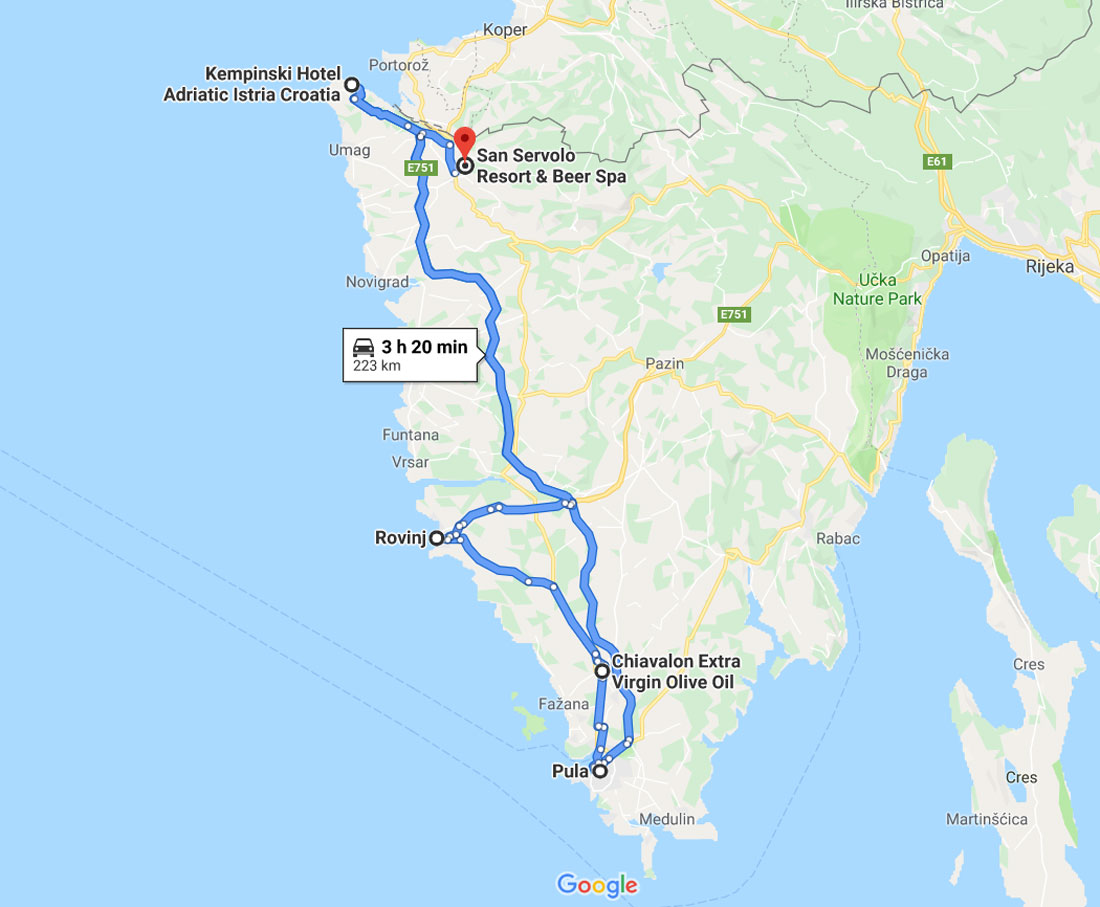
The major attraction in Pula is the Roman Arena (or Colosseum). We met our guide by the dockyards.
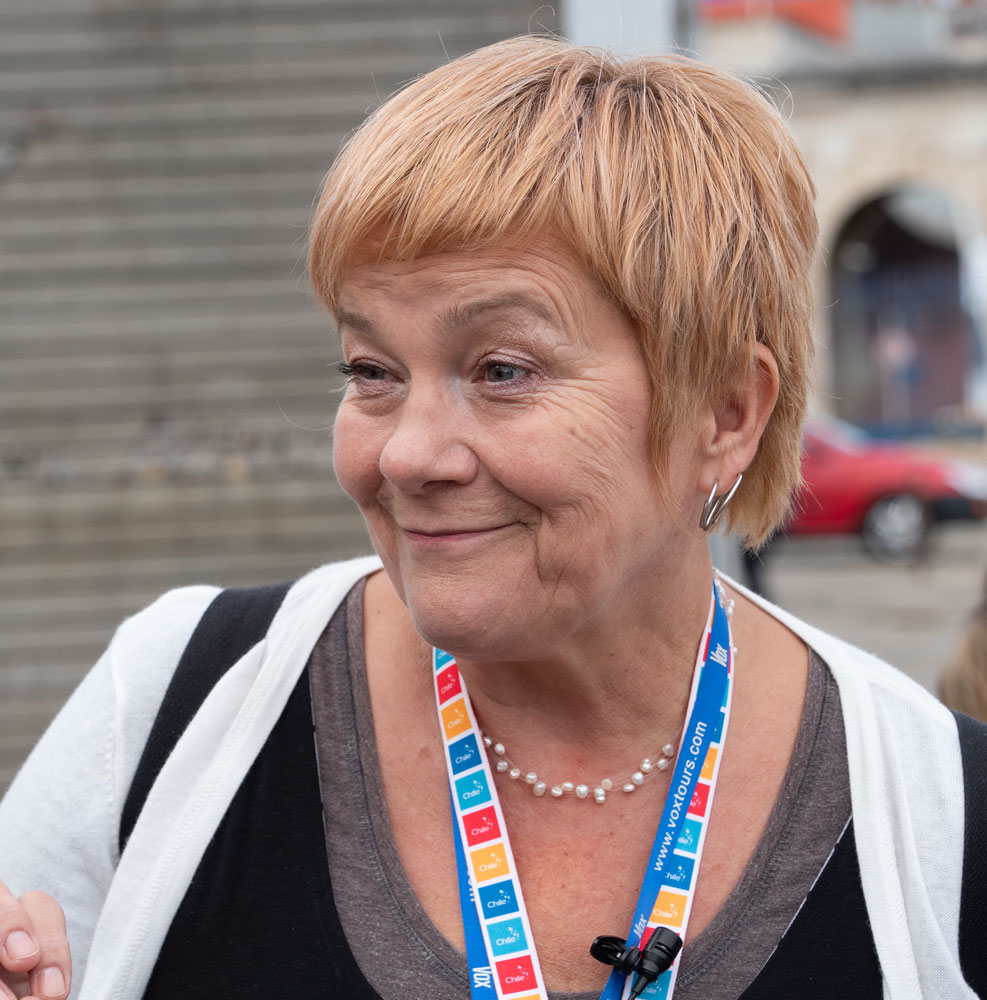
Pula had been known for its shipbuilding industry, but the shipyard company had gone into bankruptcy recently and her husband had lost his job. Here's one of the ships - I think it is a container carrier - that was being built.
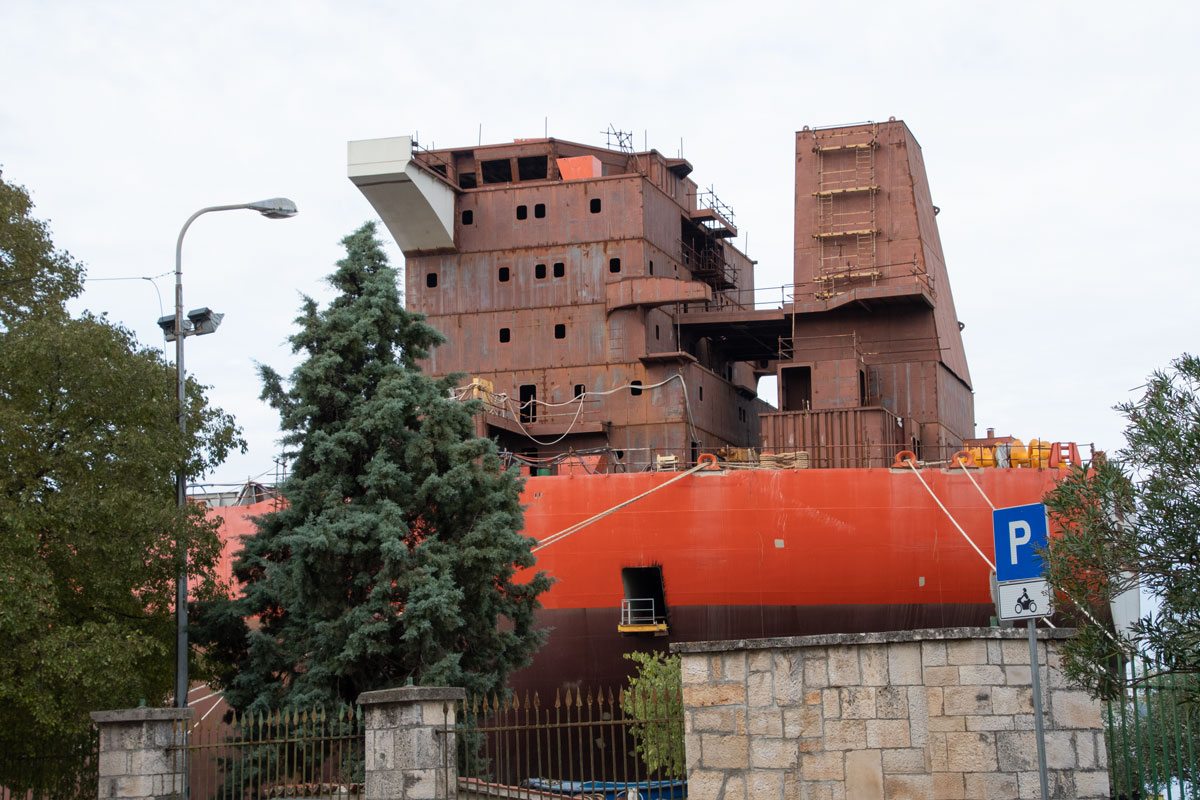
The front part of this ship.
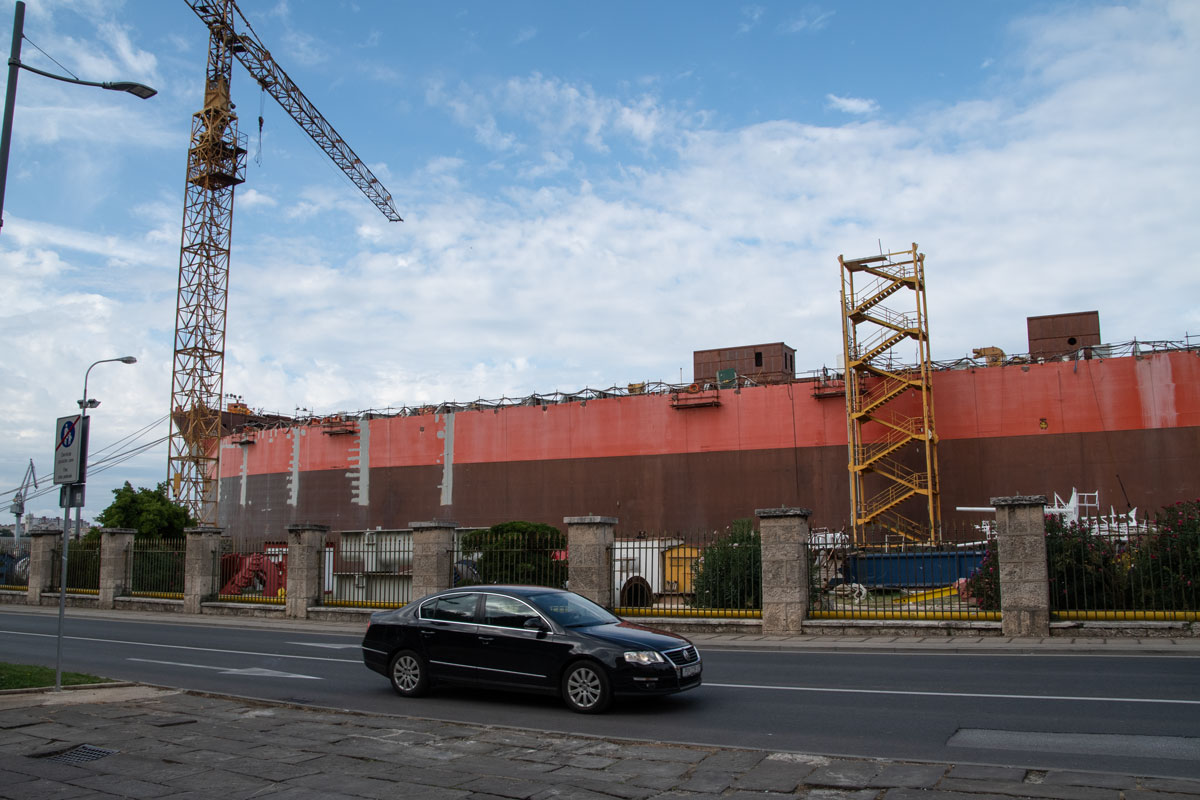
We first stopped at a square where there is a surviving Roman building, the Temple of Augustus. It was converted into a church around the 4th Century, which is probably the reason it survives today. It was hit by a bomb in WWII, which caused major damage, but was rebuilt in 1947.
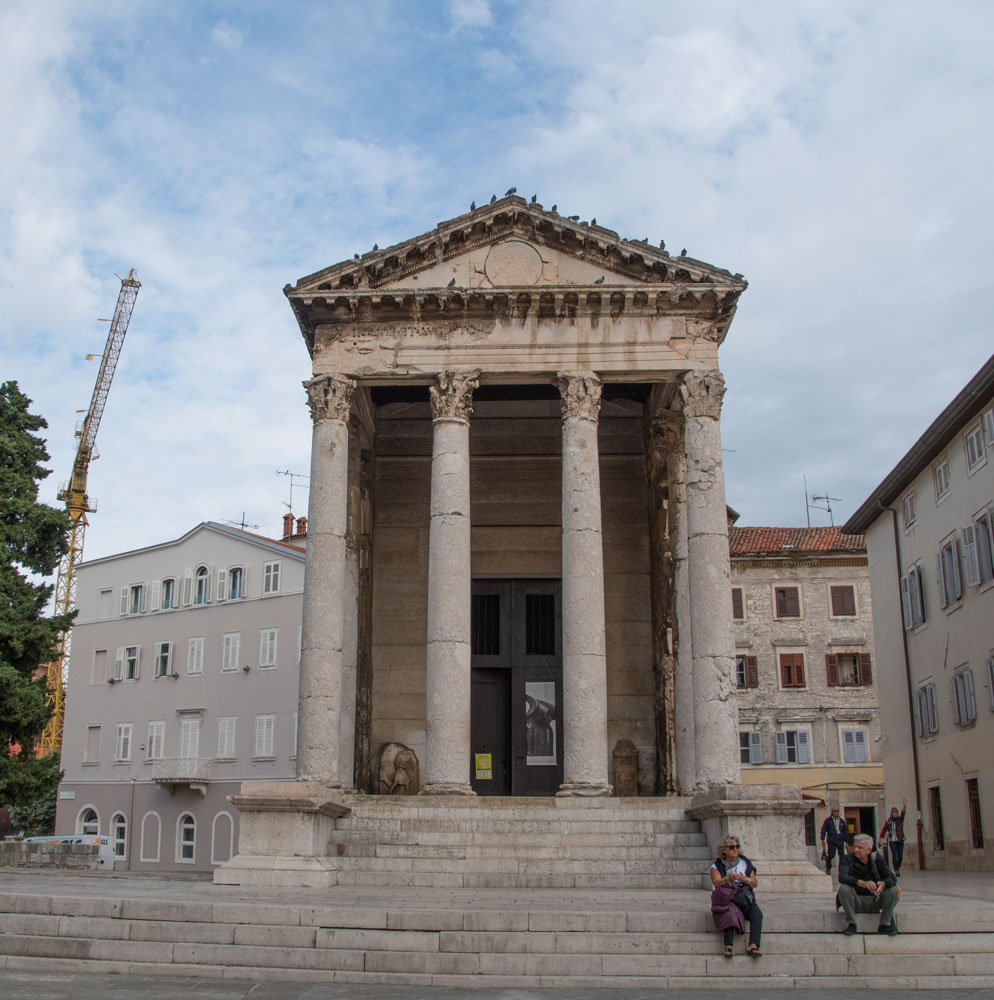
Then we walked through the narrow streets of the Old Town until we came to the Arch of the Sergii. It is showing signs of collapse, since the supporting arches on either side are missing, but plans are being made to reinforce it.
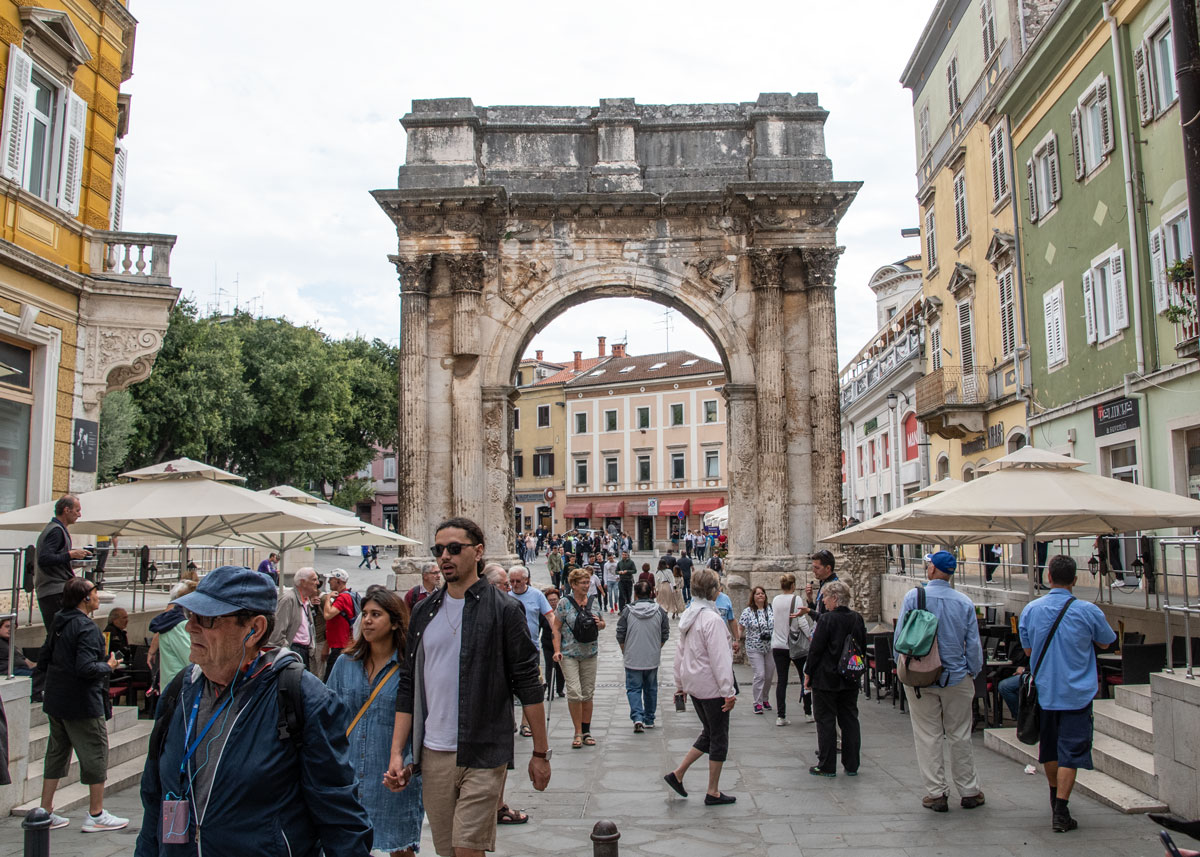
There's a small cafe to your left as you approach the arch and there was a statue of James Joyce on the terrace. Joyce stayed in the attached hotel from 1904 to 1905, teaching English. Whether he wrote while there, I don't know. Here's another link. A sign on the building says "Hostel Joyce".
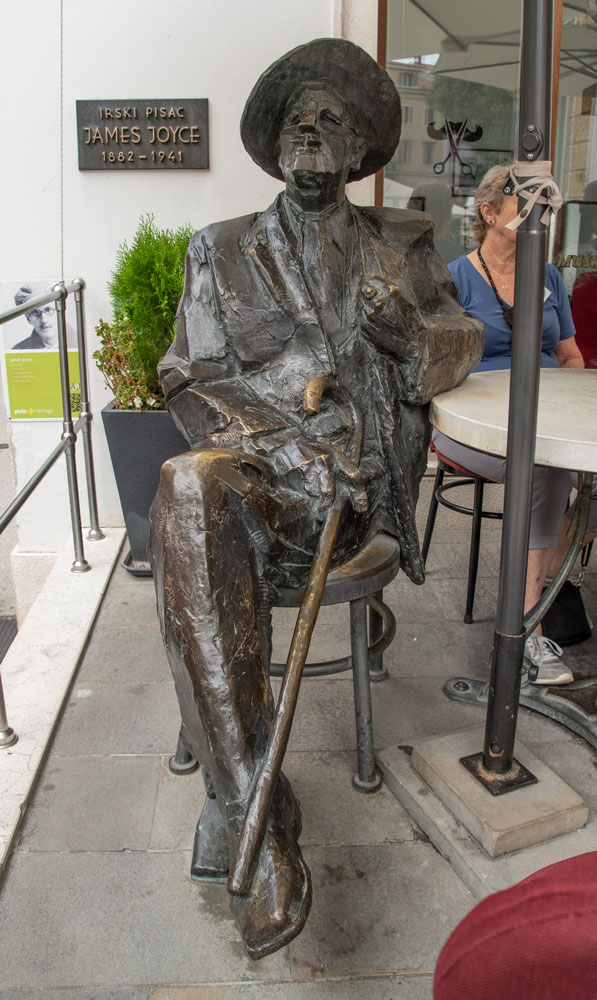
From here we walked along the city walls until we came to the Roman Arena.
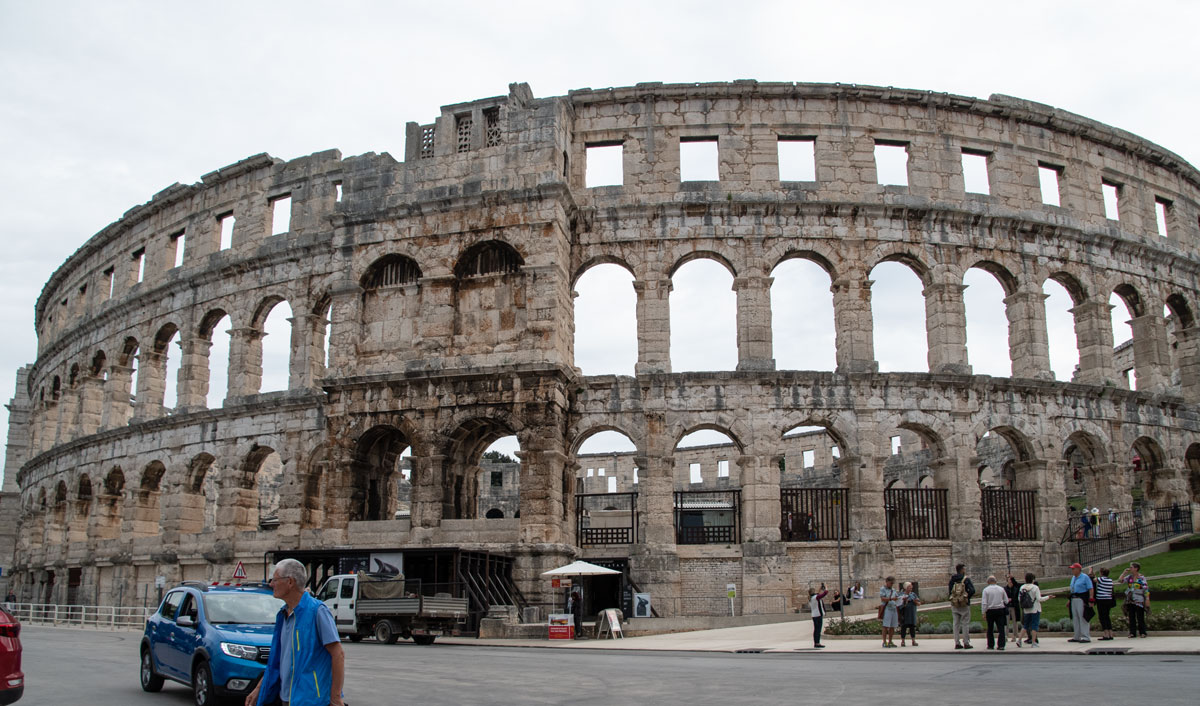
We entered the arena, and our guide gave us some detailed history. Here's a view of one side, with the seats. The arena could seat 23,000 spectators while the Colisseum in Rome could seat 50,000 or more (some sources say 87,000). The arena has been partially restored. Here are a few links to information about Roman arenas: Link, Link, Link, Link
The capacity of some other Roman arenas are:
El Djem in Tunisia - about 35,000 spectators.
Arena of Nīmes - about 24,000 spectators.
Arles Amphitheater - about 20,000 spectators.
Verona Arena - about 30,000 spectators.
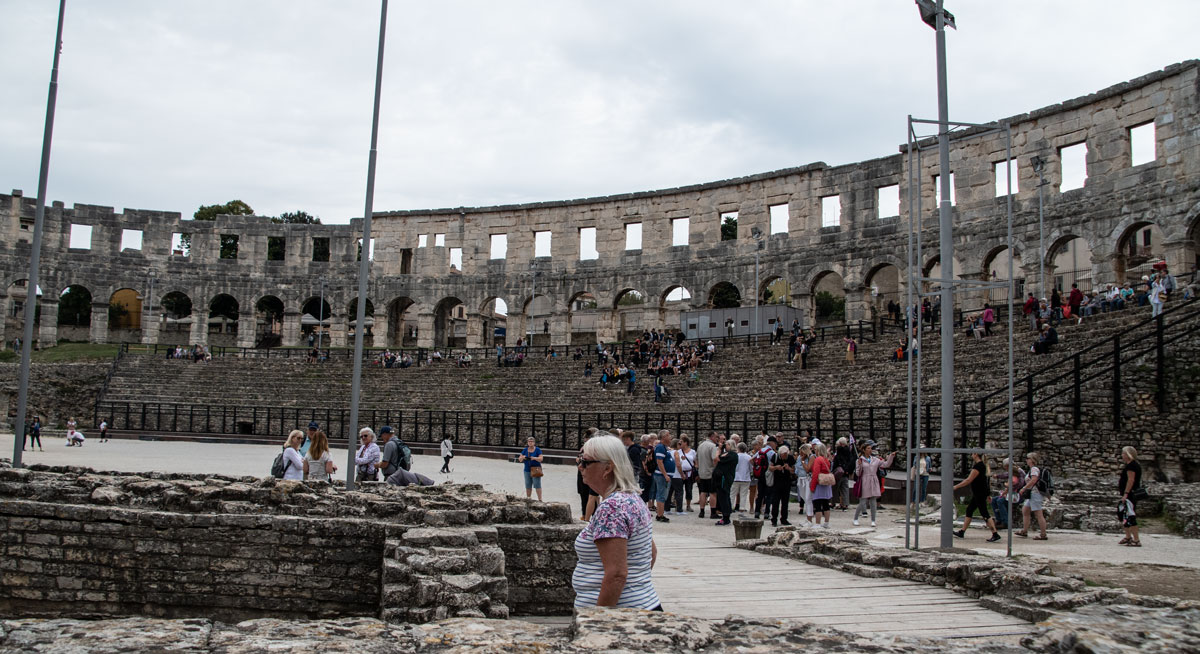
A view of the other side.
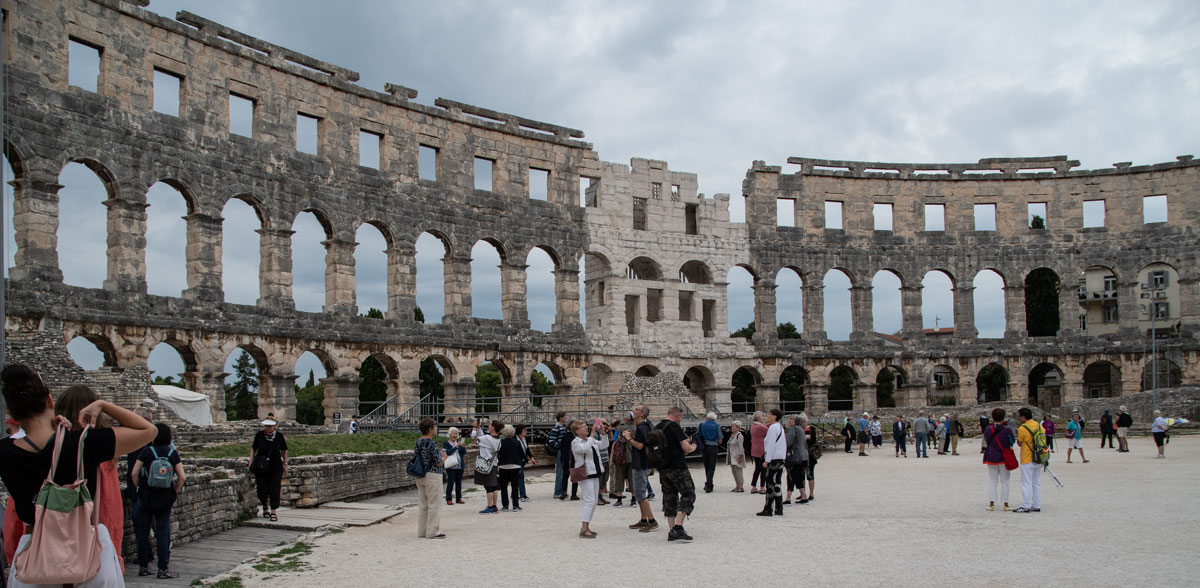
Bob resting in the arena.
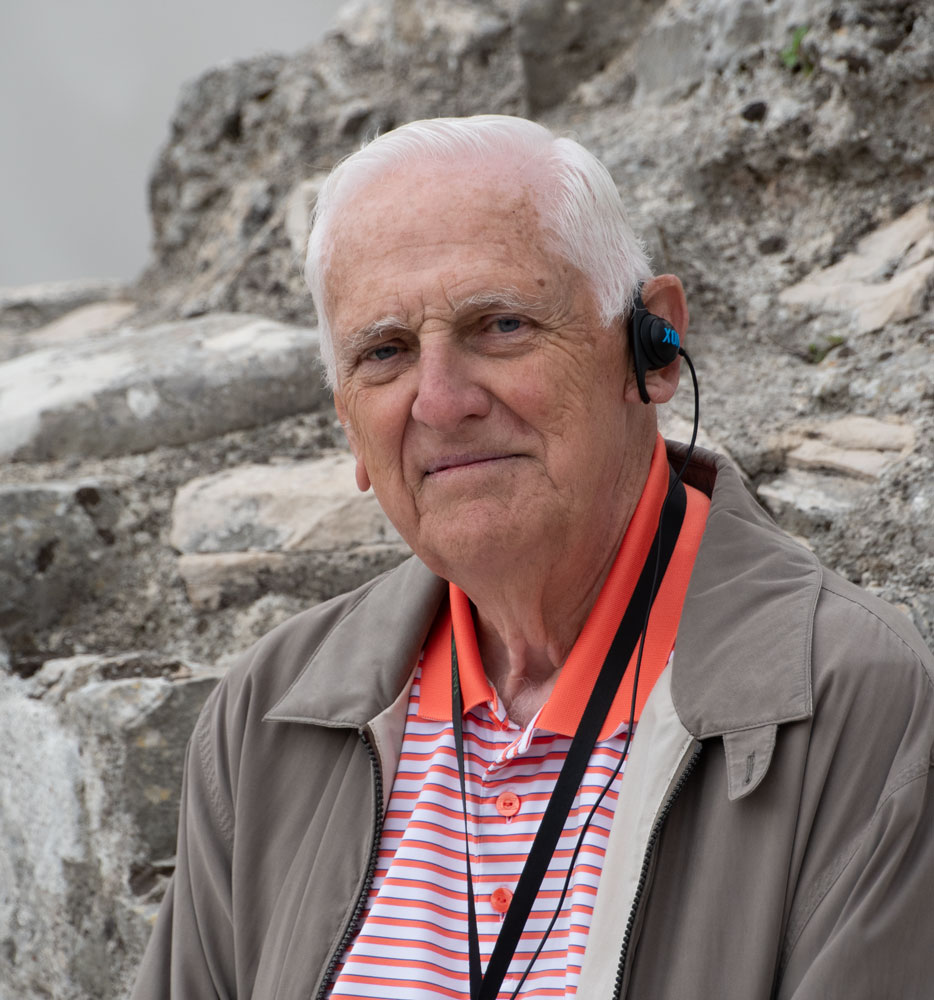
There were tunnels and rooms beneath the floor of the arena with displays of historical objects.
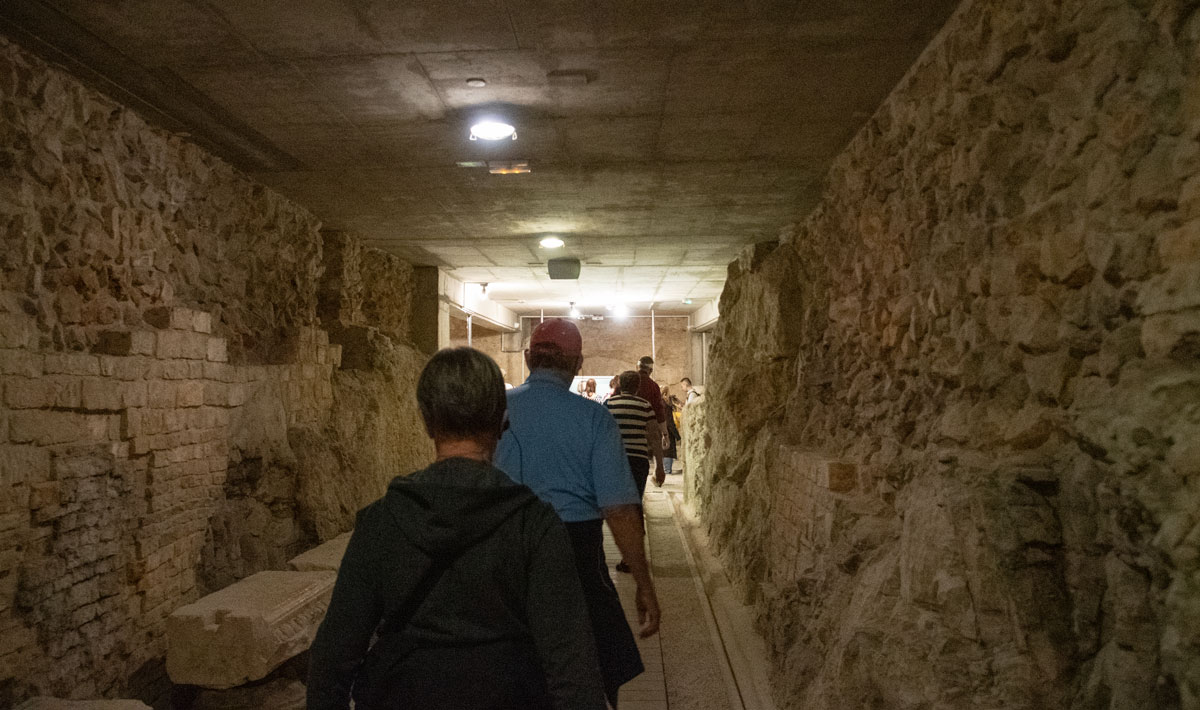
This is a reproduction of an old Roman map of this area. Venice is not shown on it, perhaps because it had not been founded at the time this map was created. The map shows roads and communication lines of the time.

The layout of the arena.
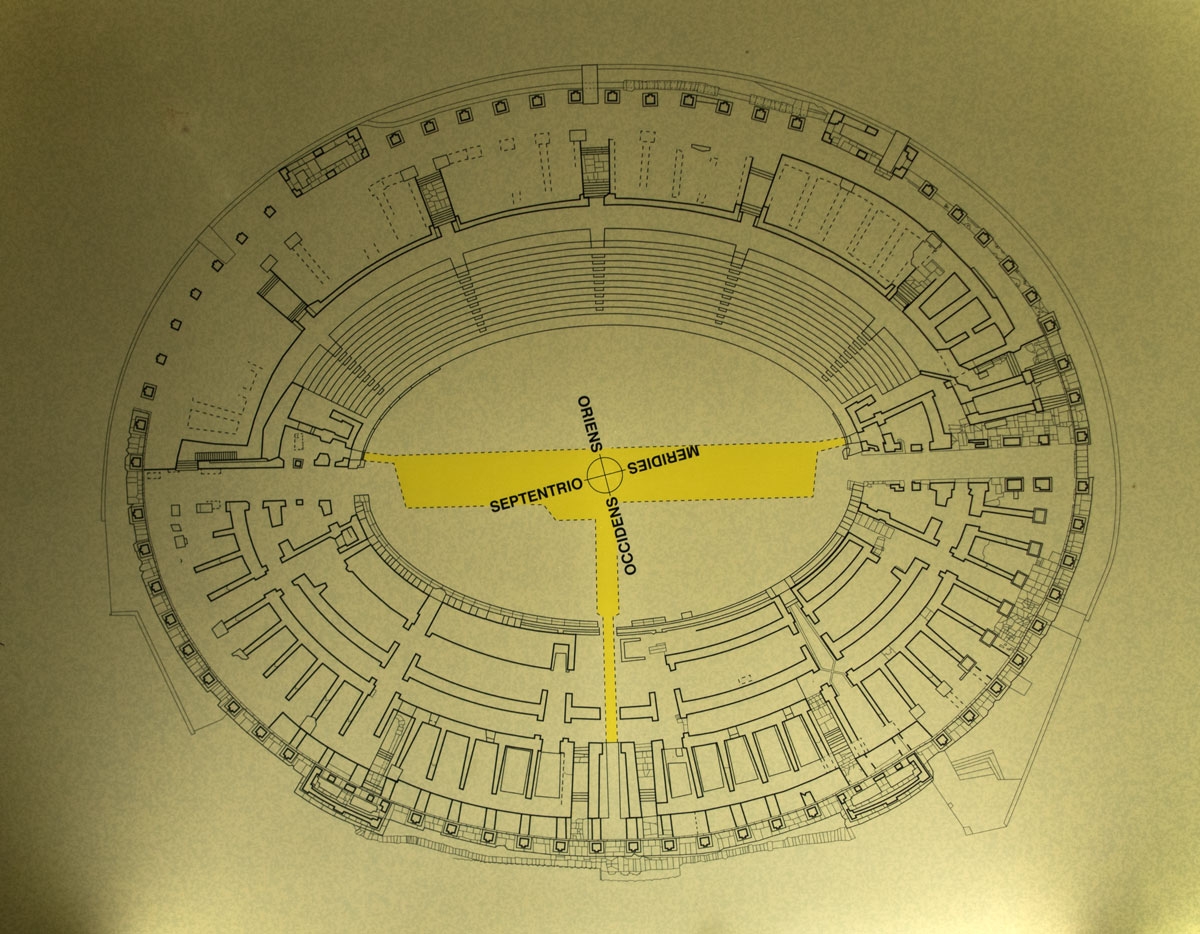
An olive press. I include this simply because we saw a different design press earlier.
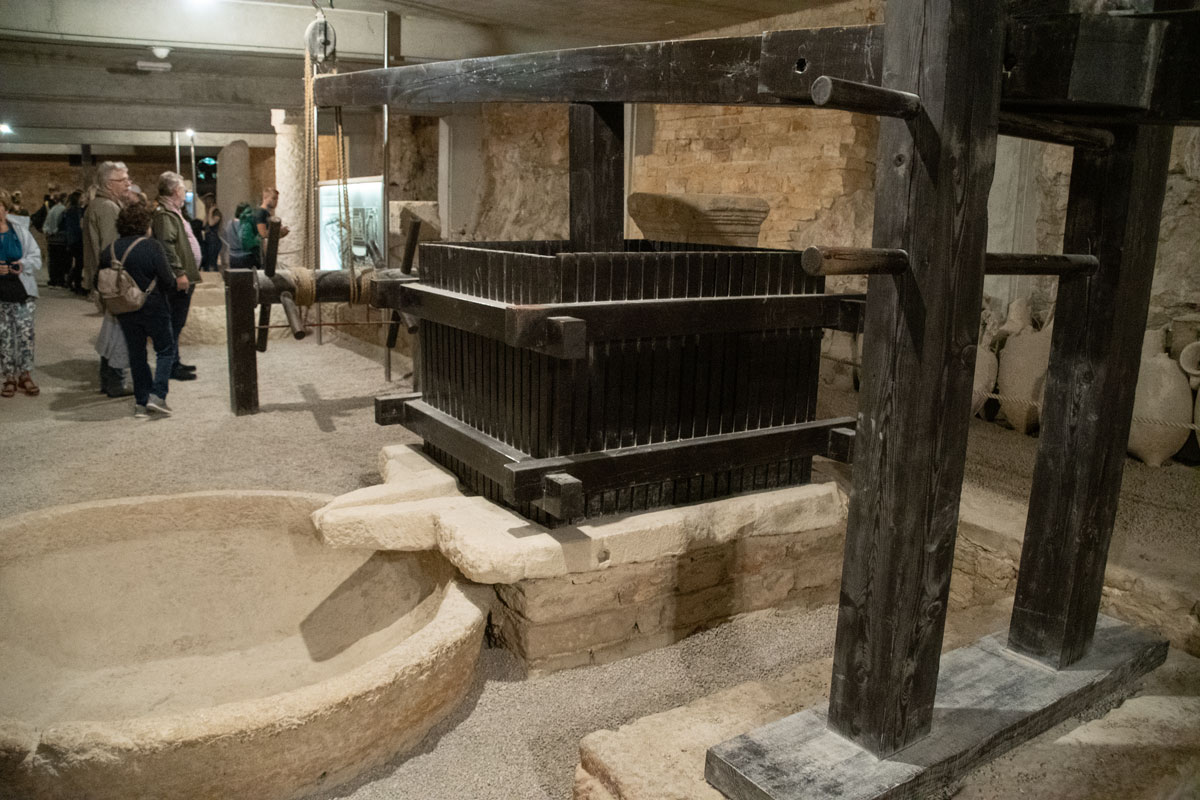
After leaving the arena we went to the Chiavalon Olive Oil Company in Vodnjan, about 13km north of Pula, where we heard a fairly scientific talk about the making of olive oil and what makes good olive oil.
The woman giving the presentation was very informed. We learned that oxygen and light are the enemies of olive oil. They press the green olives only. Her contention is that by the time the olives turn black they have been oxidized and the oil produced from them is not the best.
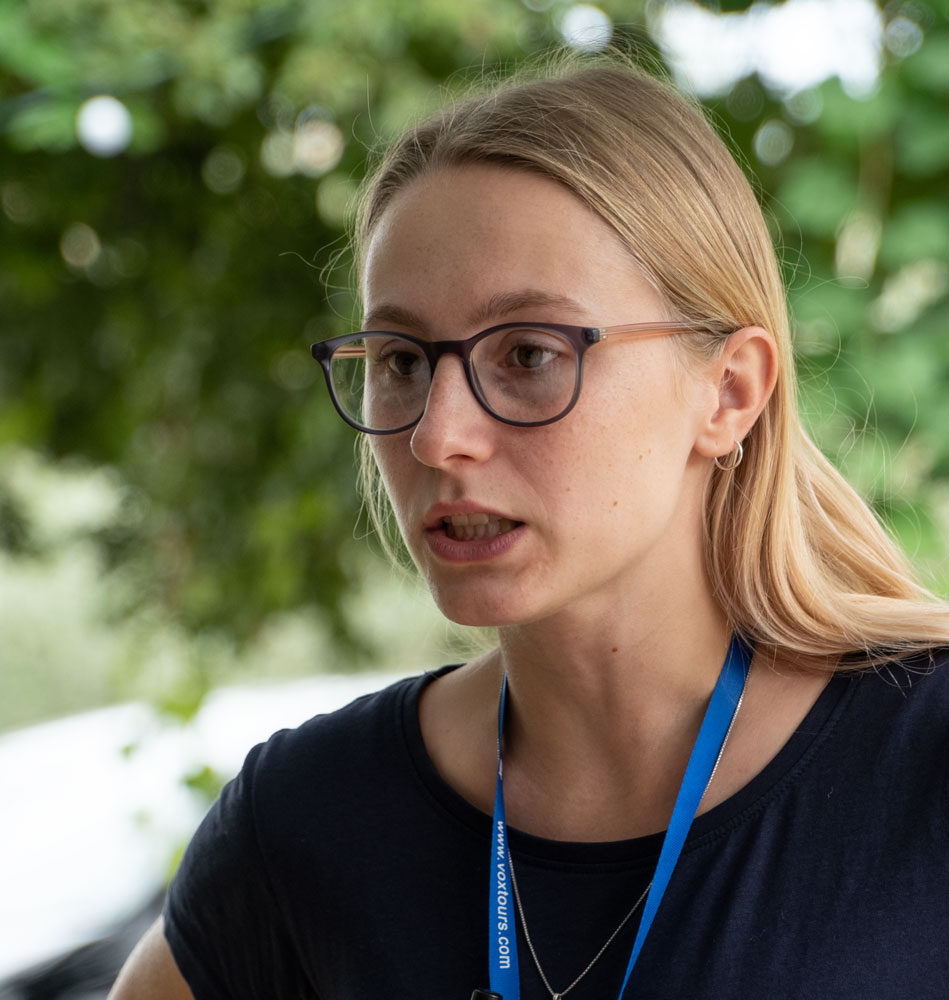
We tasted the olive oil, but I found it somewhat harsh when sampled by itself. She instructed us to take a sample and swish it from side to side in our mouths, then to swallow it. If it prompted us to cough, that was a good reaction. We coughed, but it didn't help me like the olive oil that much. Bread helped.
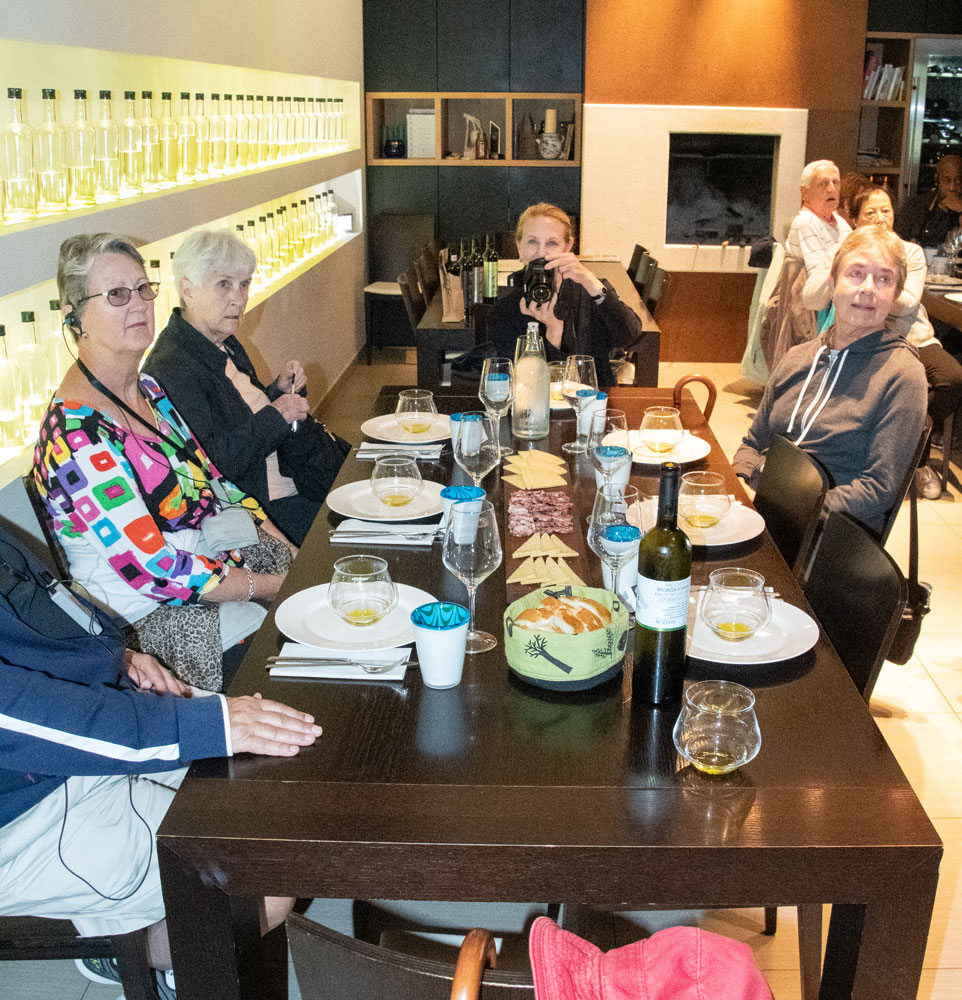
We left through the usual store and we purchased a couple of small bottles of olive oil to use at home.
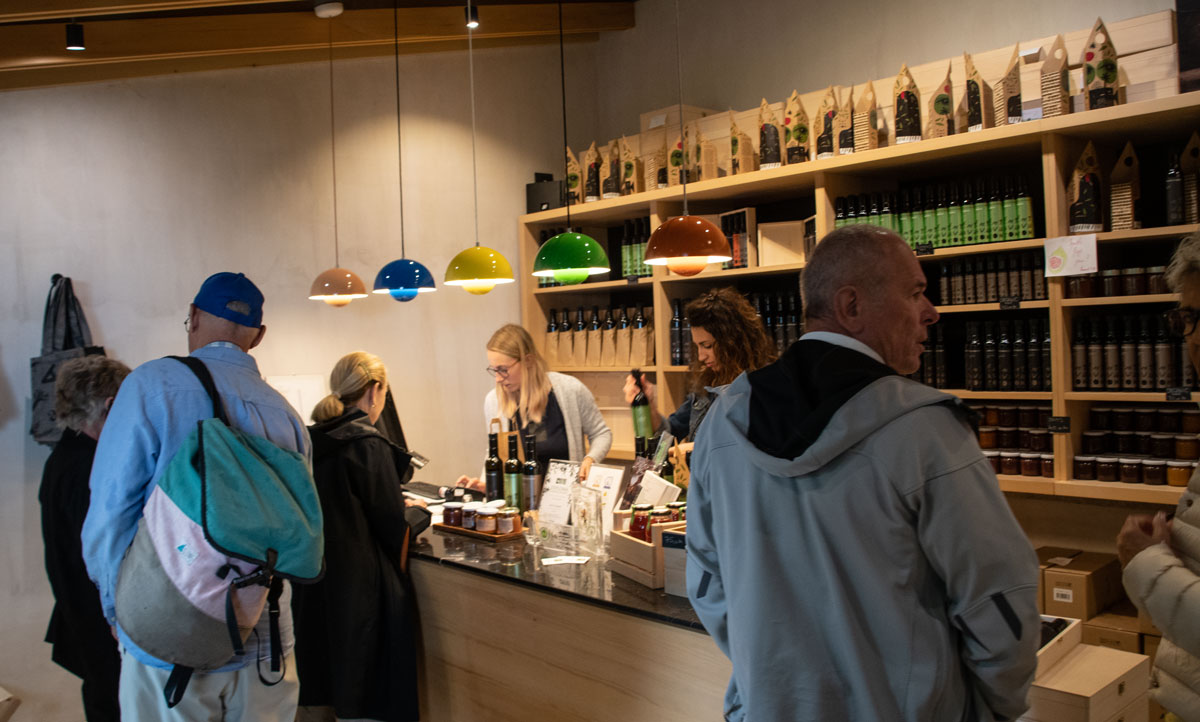
Next we bused to the nearby town of Rovinj so we could visit the church shown in this next picture.
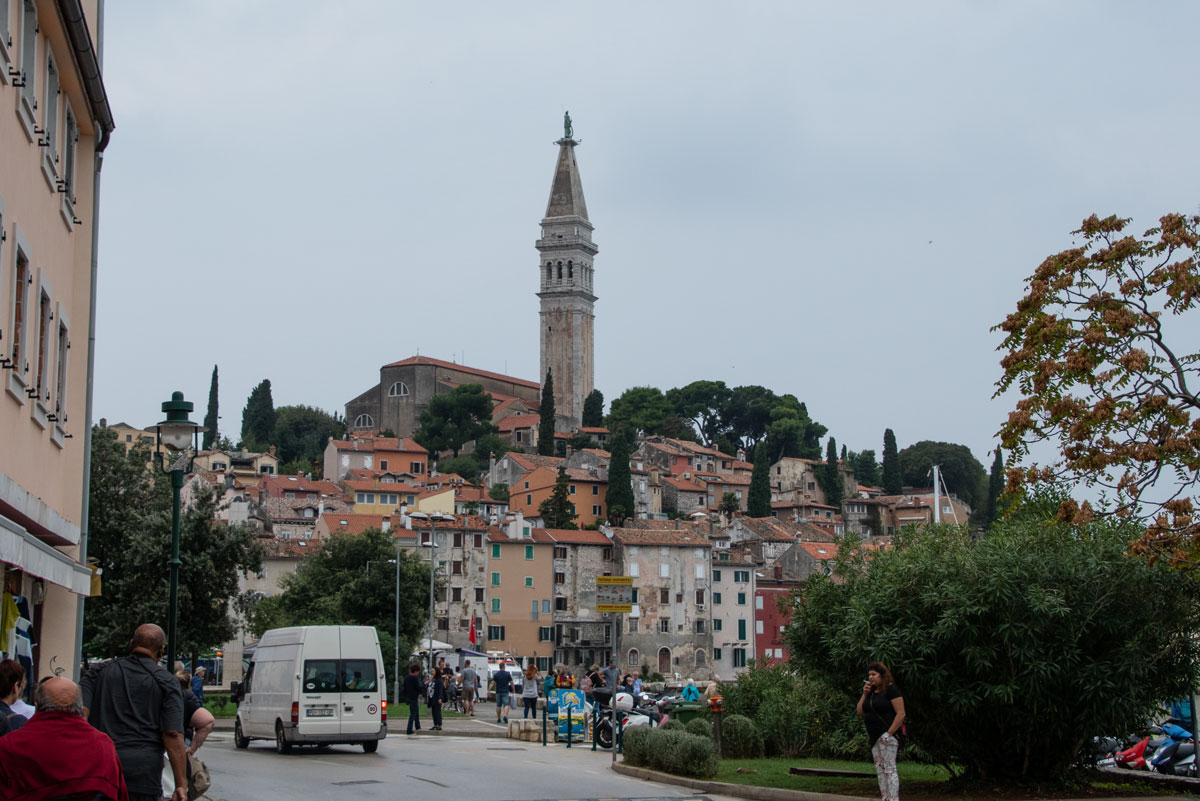
I found this aerial view of Rovinj on the web. I thought it was interesting and it gave a good view of the church.
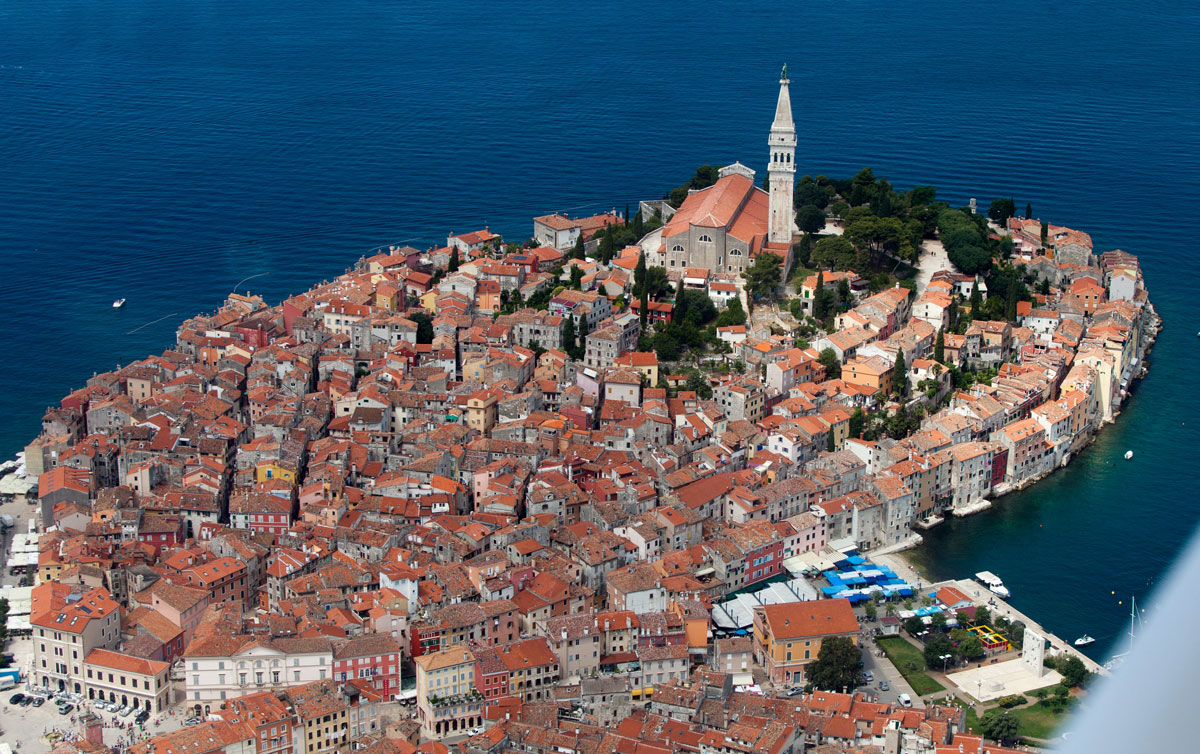
However, most of us had been "churched out" and we chose a cafe instead for coffee or a beer. Judy and I were joined by Diane, Al and Charlie.
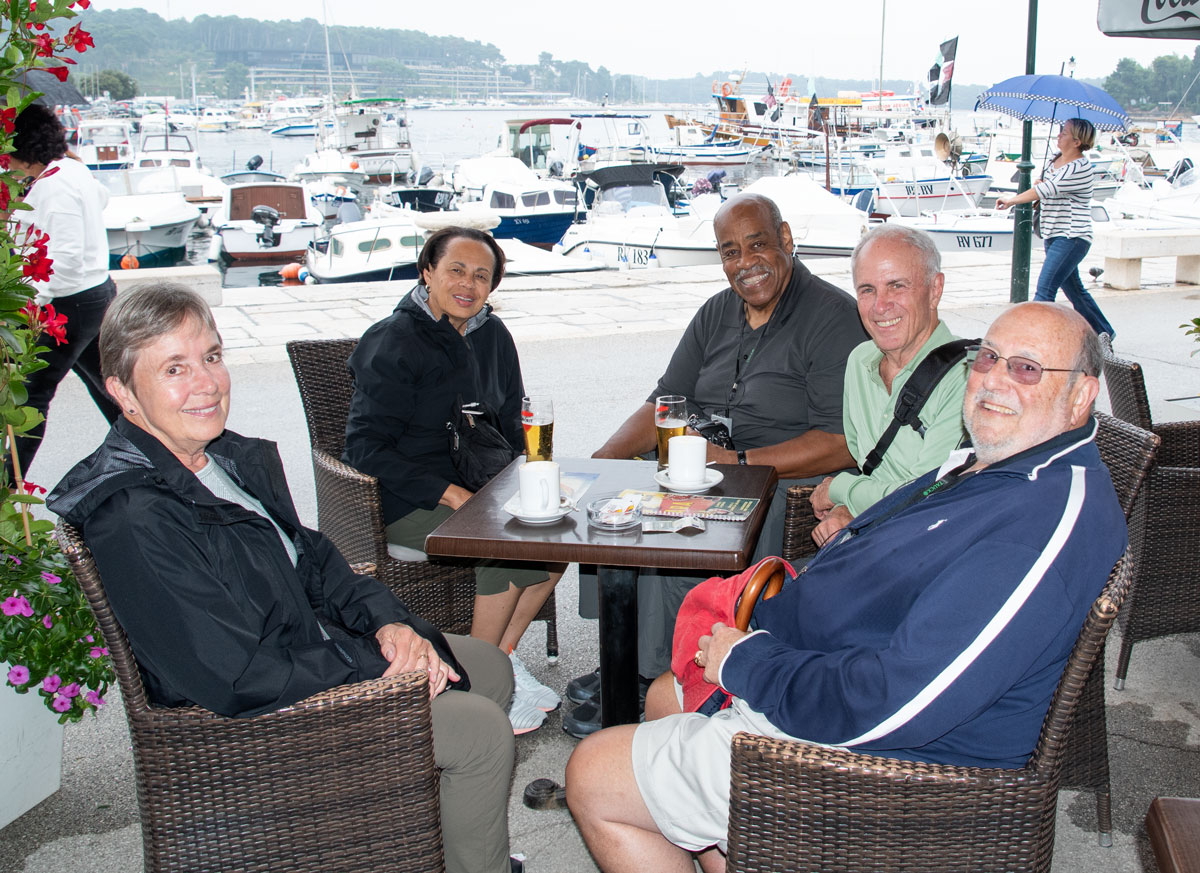
Then it was back to the hotel to freshen up. That evening, we bused to the San Servolo Steakhouse in Buje for a six course beer tasting. Al photo bombed me.
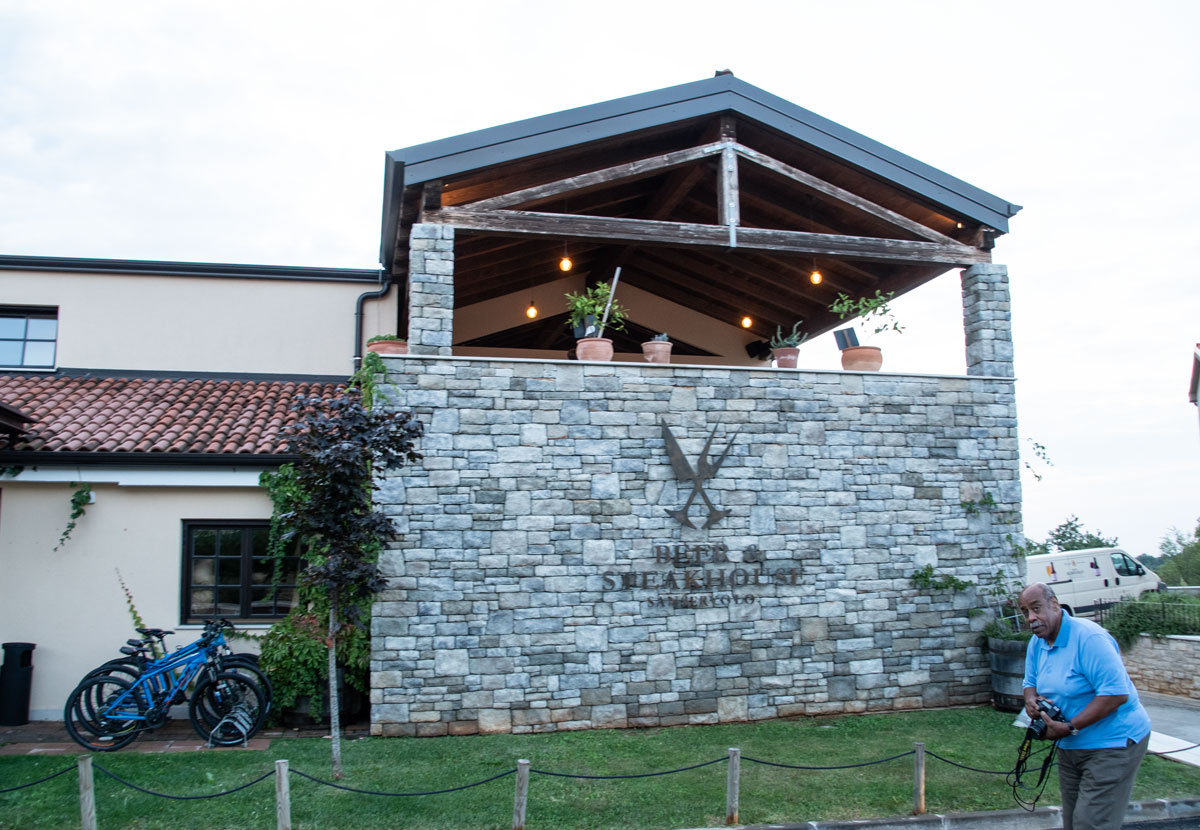
We began with a tour of their brewery facility. Here one of the employees is describing the equipment and the process of beer making.
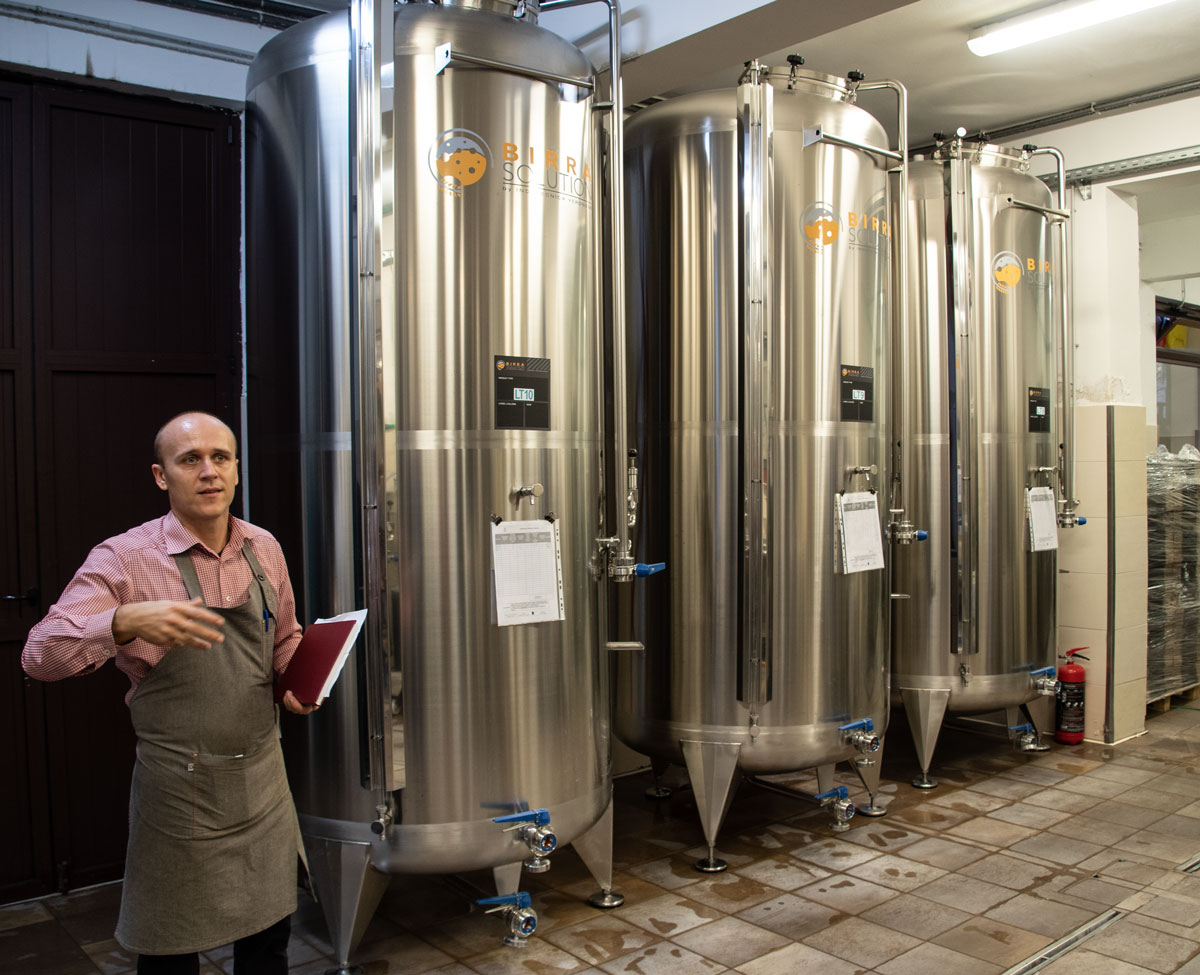
Our group in the restaurant.
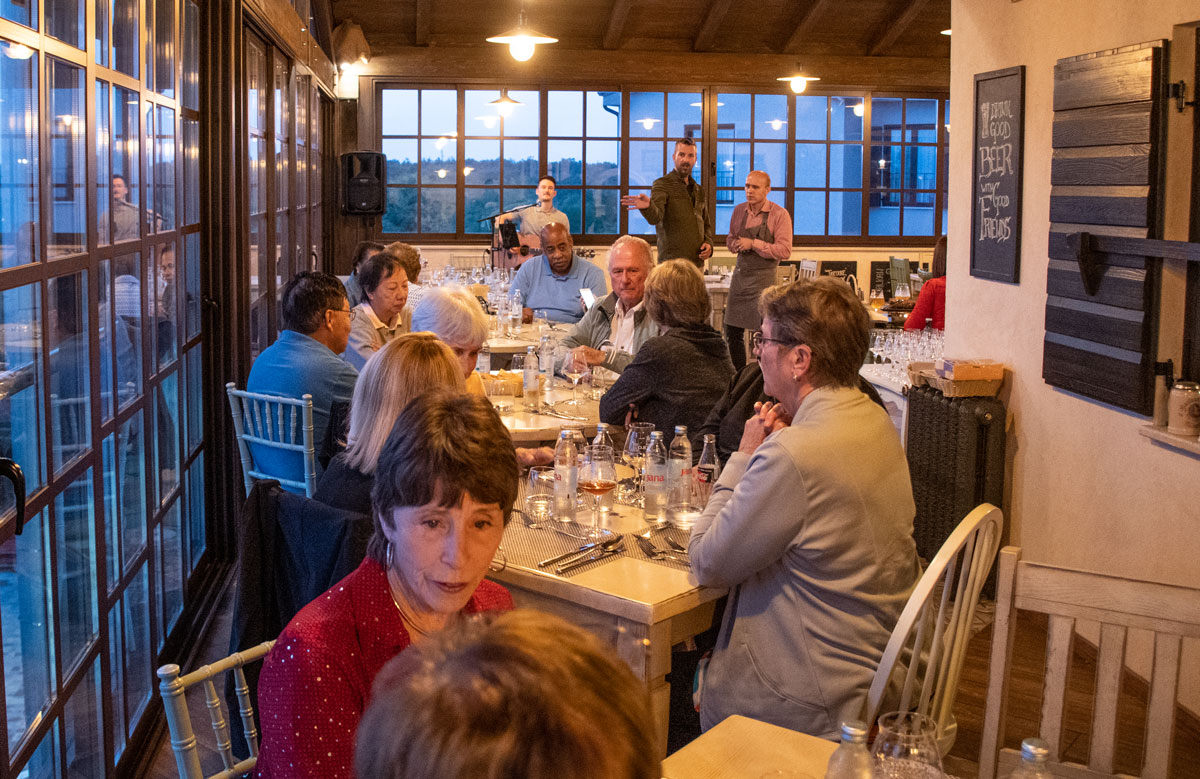
A guitar player entertained us.

I took a picture of each of the beers but I won't bore you with beer pictures. Here's one bottle.
If I remember correctly, the six courses of beer pairing were: appetizer, soup, pasta, fish, meat and dessert.
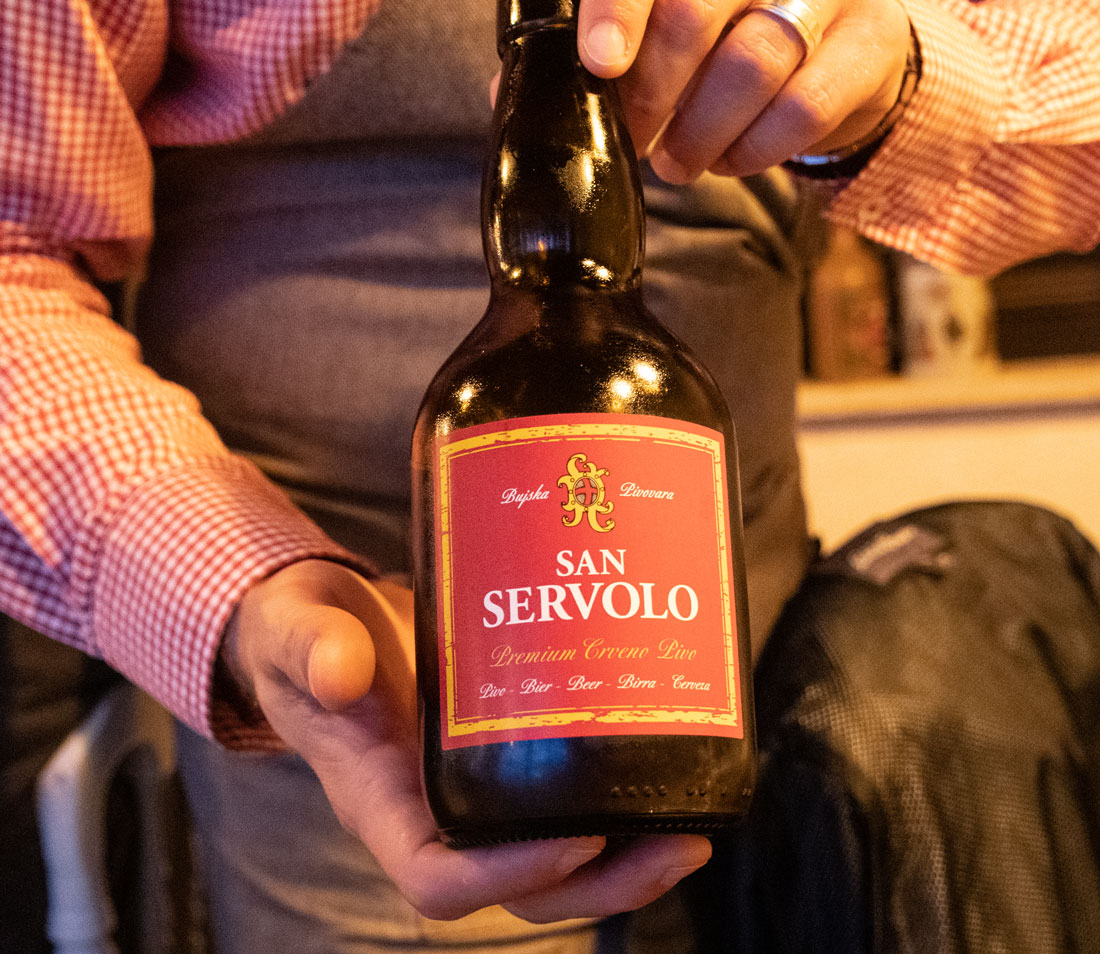
Then it was back to the hotel. We leave for Venice tomorrow.